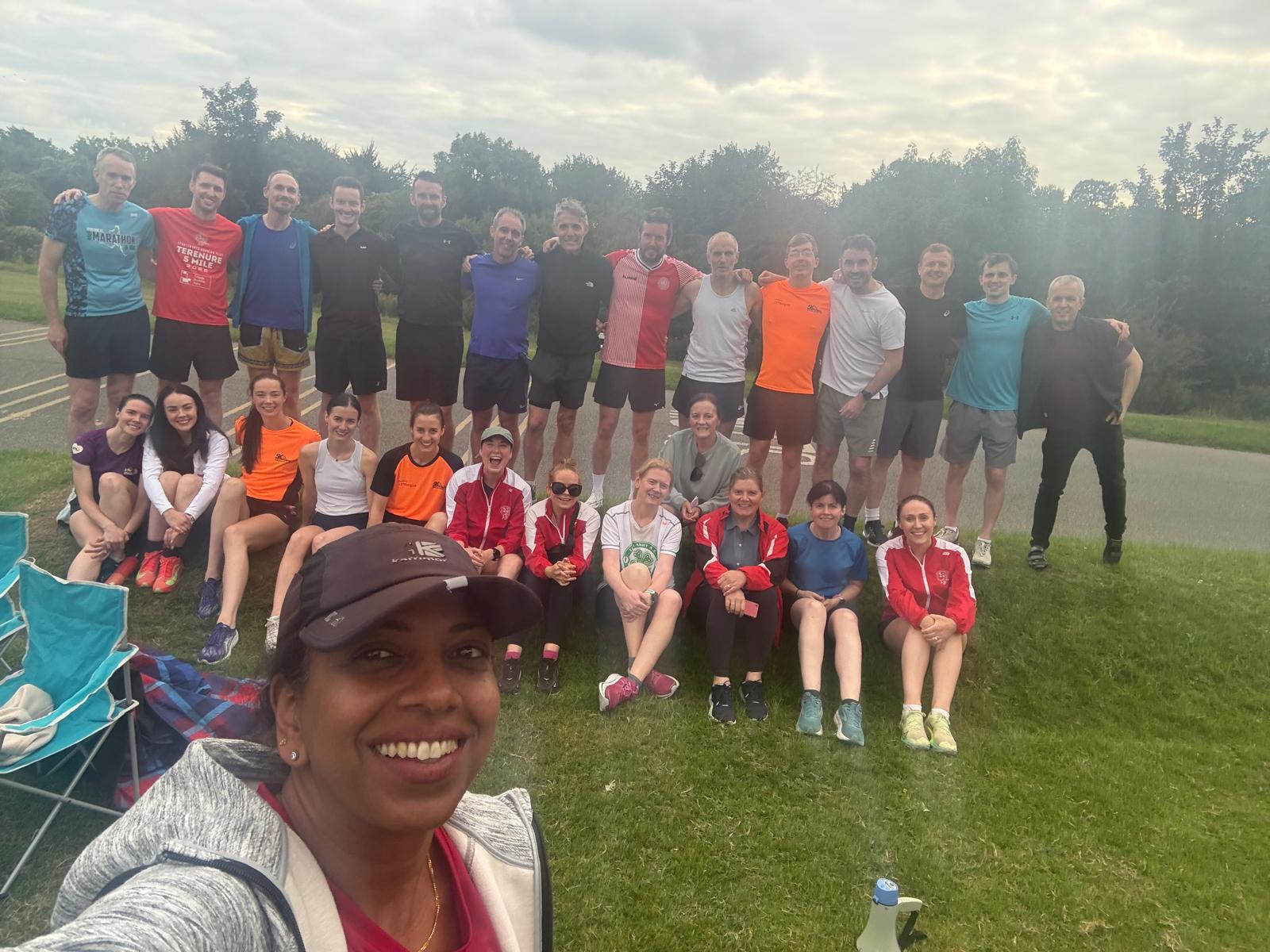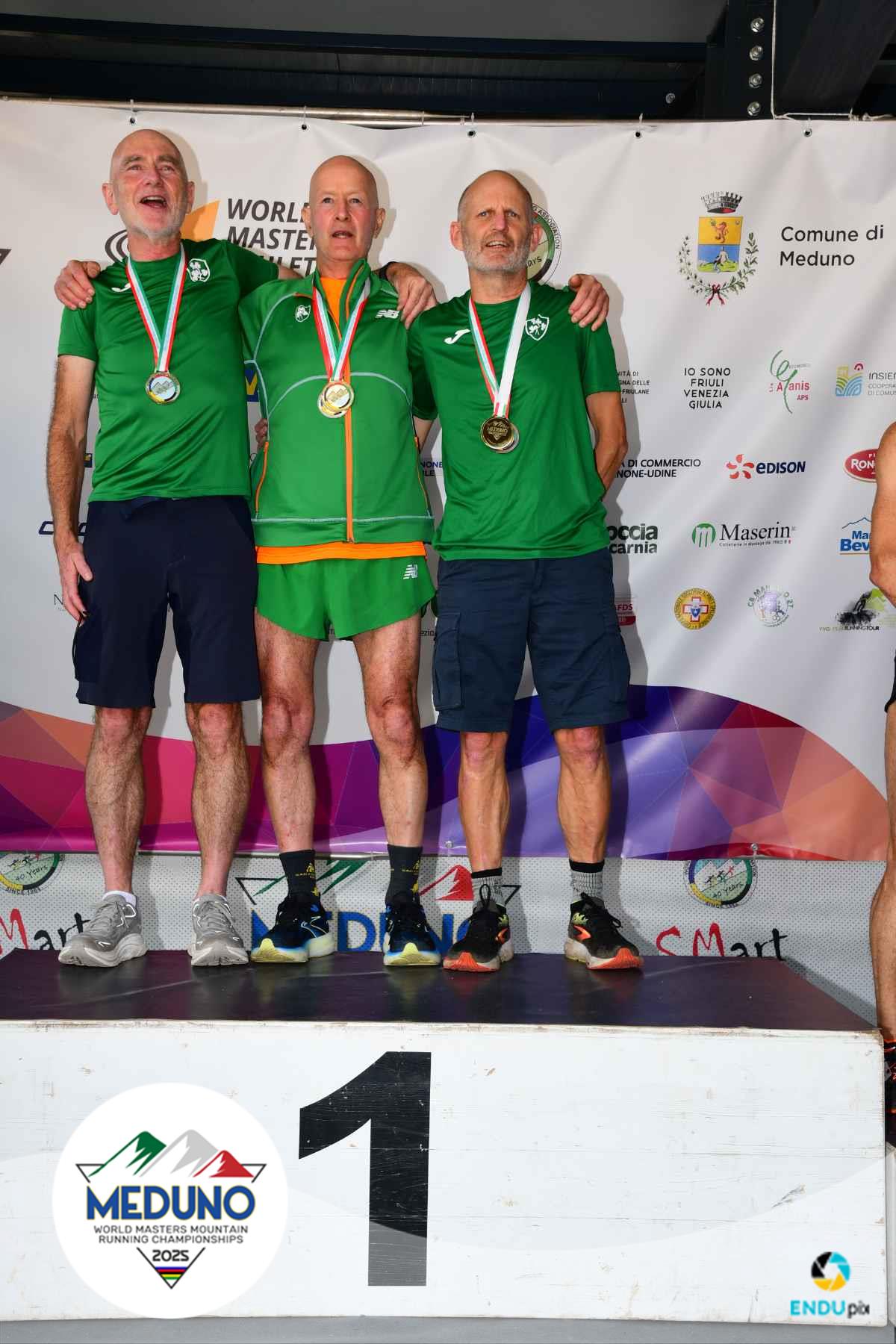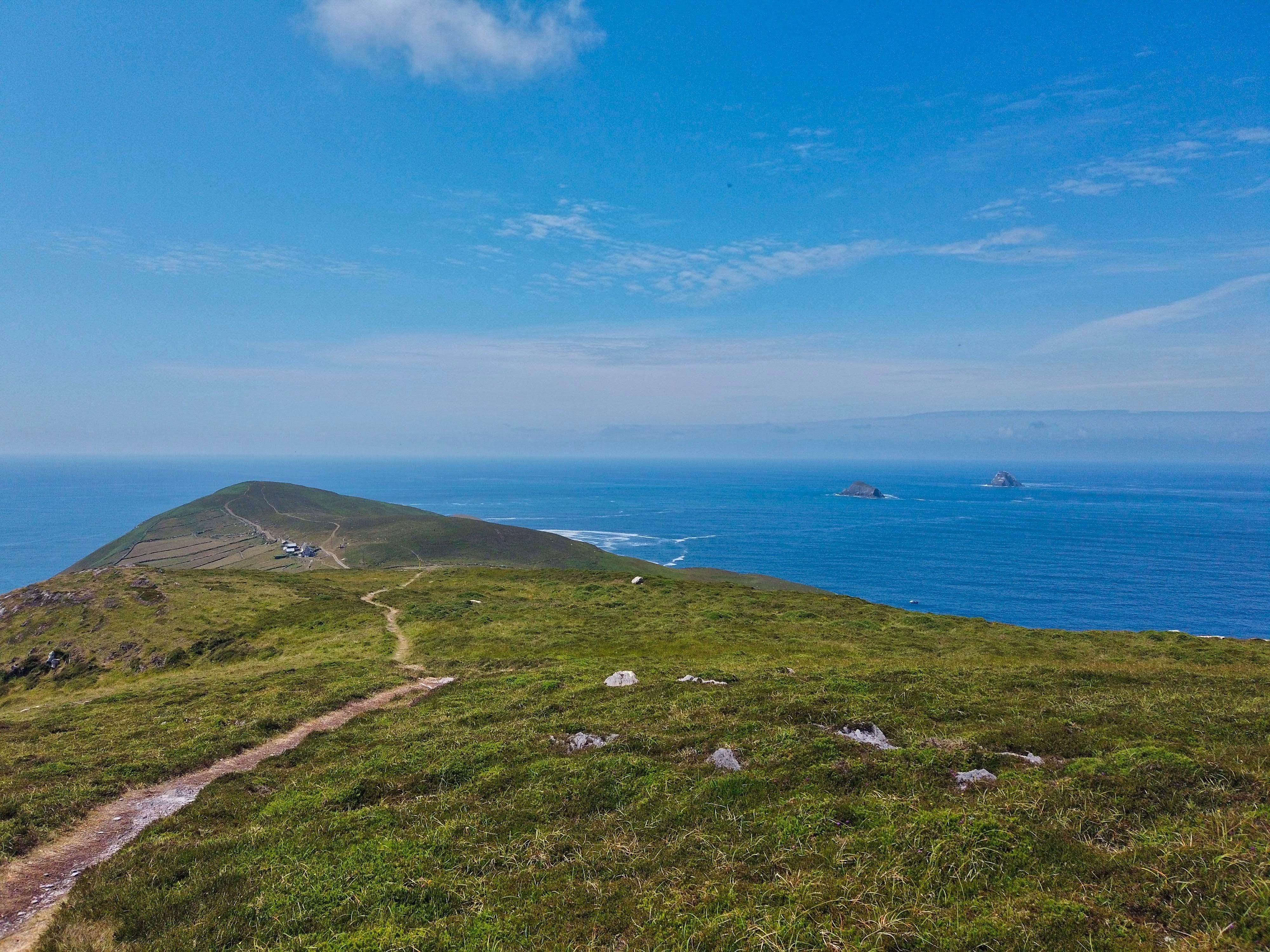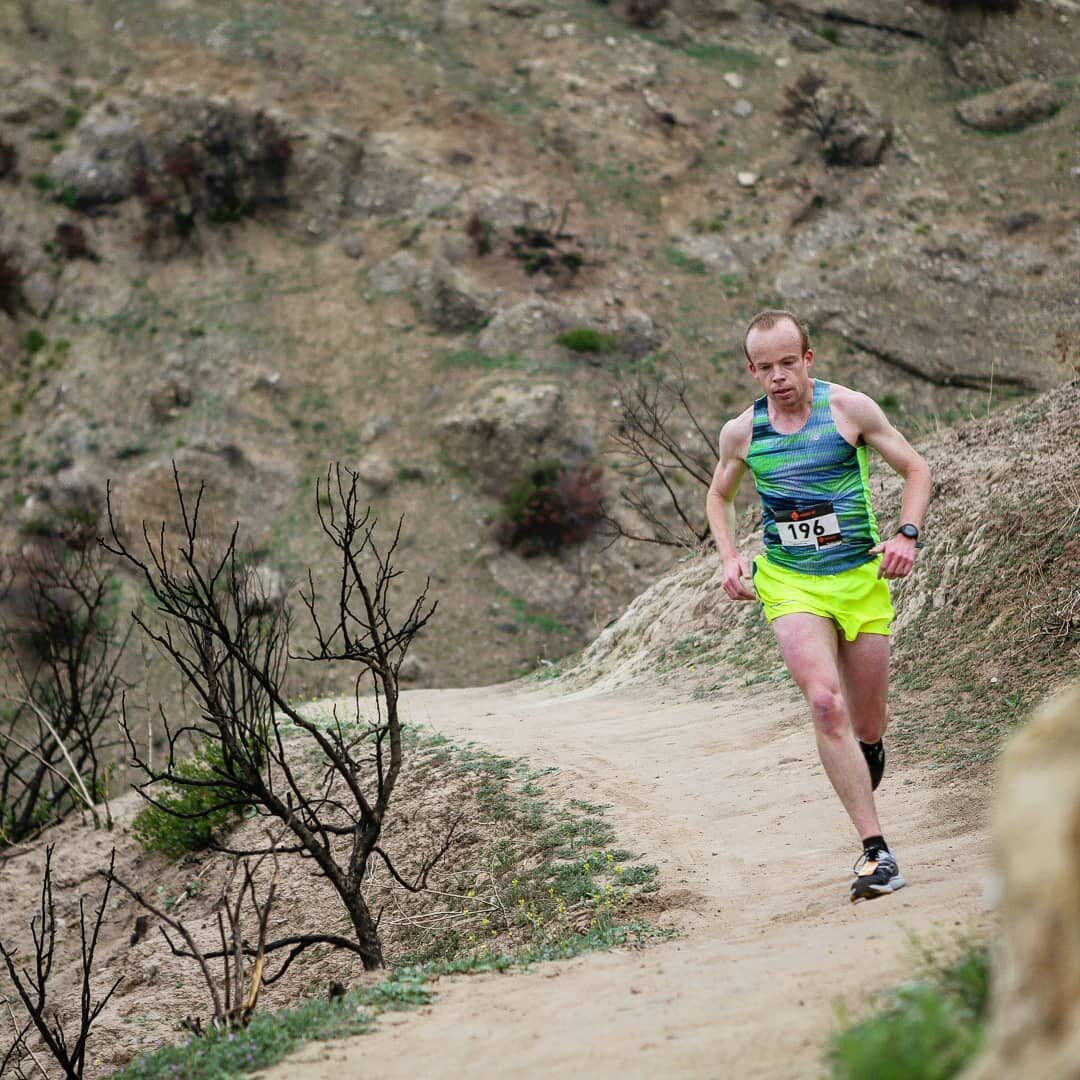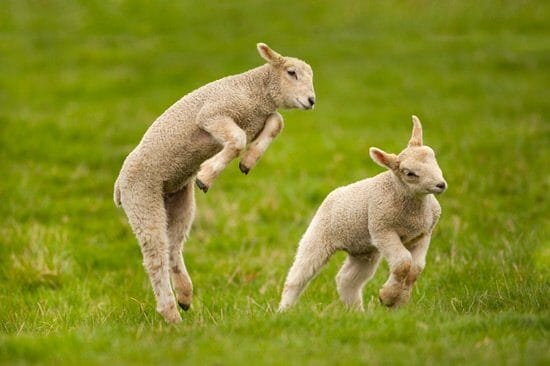Travel restrictions will mean it will be a while before we can run along a sunny beach in Albufeira or take to the streets of Berlin to do a spot of 42.2K touristing. So 2020 will surely be the year of the summer staycation. Over the past few weeks, there has been plenty of great articles written on where to stay and what to do in Ireland.
Although it is a relatively small island – 488 km (303 miles) long and 304 km (189 miles) at its widest point – Ireland has an amazing variety of terrain. The landscape ranges from rolling green pastures and fertile fields to mountain peaks, dramatic coastline, sandy beaches, tranquil lakes (loughs), great stretches of blanket bog and rocky peninsulas jutting out to sea. With quaint rural lanes, rolling green hills and stunning mountain vistas and seascapes, there can be few countries as rewarding for back-roads running as Ireland.
The winding lanes of Ireland run through lush pastures to the wildflower-studded pavements of the Burren and to the basalt columns of the Giant’s Causeway. They weave their way into the glens of the Antrim Coast, along the wild peninsulas of Cork and Connemara and around the calm loughs of Galway and Donegal. Along their leisurely way they pass by ancient stone circles and megalithic tombs, Celtic crosses and round towers, medieval castles and stately homes. They afford ample opportunities to pause for post-run refreshment, in a pretty town village or a post-run swim.
These running routes provide a more intimate experience of the people, customs, architecture and cuisine. Expect delightful surprises around every bend, packed with the sights, sounds and flavours of the real Ireland. The 10 running locations in no particular order of preference reflect the fantastic diversity of Ireland. Routes may range in distance but you can always adapt the routes or just explore the general area.
Waterford Greenway

The Greenway is a spectacular 46km trail along an old railway line, venturing from the quays of Waterford city all the way to the historic port of Dungarvan, a vibrant seaside market town with a pretty quay-side setting. The best place to pick up the run is the charming town of Kilmacthomas.
From the old Workhouse built-in 1850 in Kilmacthomas travel over the Kilmacthomas viaduct passing the stunning views of the Comeragh mountains to the North, cross over Durrow viaduct past Durrow Railway Station where the old platform and station still stand. Then it’s on to the spectacular Ballyvoile tunnel, a 400mt long tunnel which is full of the atmosphere (don’t forget to watch out for the fairy door’s on either side). Next, you will cross over the Ballyvoile viaduct, blown up in 1922 but now restored to its former glory. From here you can almost smell the sea as you round the headland and take in the spectacular views of Clonea strand and Dungarvan Bay.
Then it’s downhill all the way to Dungarvan as you take in the sights along the way, through the playground in Ballinroad over the Clonea Road and finishing just before the Gold Coast Road. Don’t forget you can hire bikes and cycle back on a good day or just run a portion out and back.
Muckross House Lake

One of the most popular family walk or cycle in Killarney National Park is also a great run in the early morning. The 10km loop around the enchanting Muckross Lake comes with stunning views and places to visit at every turn…and I mean every turn.
The park covers almost 26,000 acres and encompasses lakes, mountains, ancient yew and oak woodland as well as Ireland’s only Red Deer herd. Along with an abundance of birdlife, flora and fauna, it really is a nature lovers delight. You soon pick up a dedicated one-way trail following the shores of Muckross Lake on your left and glimpses of Lough Leane on your right.
Wind your way past perfect swimming spots to the famed ‘Meeting of the Waters’ where all three of Killarney’s lakes combined. After a few stops to admire the vie continue on passing the foot of Torc Mountain (535m) then take a short hike up to view Torc Waterfall. Once back on the trail you pass by the 19th Century mansion of Muckross House and can run onwards back to Killarney. The visit to Torc is optional, alternatively, you can cross the main road with care and re-enter the Killarney National Park and away from the traffic. This is one of the best running routes in Ireland, just be careful on the small section near Torc.
Bere Island

Bere Island, off the Beara Peninsula in County Cork, needs no introduction in parkrun tourism circles! The island may only be roughly 10k x 3k in dimension, but that’s more than enough space for a parkrun!
The population of the island is just 220 people, but parkrun tourists can make their way to the start line via… a ferry! Bere Island Ferries leaves Castletownbere at 9.00 AM and provide bus transport to the event, getting you there safely in time for the pre-run briefing and the 9:30 am started. Or for those who prefer a leisurely start to park run day, there is accommodation available on the island.
The single-lap course offers spectacular scenery of Bantry Bay, whilst the route takes in in a Bronze Age wedge tomb and the remains of a Viking boatyard. As well as that, it’s also possible to see dolphins and other sea life off the coastline, so you’ll be sure to have a whale of a time! The Bere Island parkrun experience is completed with post-parkrun coffee in the Bakehouse Cafe in Rerrin Village.
You can find out more about Bere Island parkrun here in one one of our few park run race reports. If there were one run on this list that’s not to be missed, then this is it. There are very few places like it on a warm summers day. If the Parkrun is not on that day you can throw your stuff behind a wall and go for a run and a swim after to cool down.
Dursey Island
 The Ring of Beara is a scenic driving route that runs around the Beara Peninsula from Glengarriff to Dursey Sound and then back to Kenmare in County Kerry. Along the way are stunning coves, picturesque villages, islands, forests and mountains. Whether the weather is sunny and warm or moody and misty, this peninsula leaves a lasting impression on visitors. For archaeology enthusiasts, there are stone circles, cairns and burial grounds, some dating back to 2500 BC, while runners, walkers and cyclists will find plenty of routes, trails and mountain paths on the Beara Way.
The Ring of Beara is a scenic driving route that runs around the Beara Peninsula from Glengarriff to Dursey Sound and then back to Kenmare in County Kerry. Along the way are stunning coves, picturesque villages, islands, forests and mountains. Whether the weather is sunny and warm or moody and misty, this peninsula leaves a lasting impression on visitors. For archaeology enthusiasts, there are stone circles, cairns and burial grounds, some dating back to 2500 BC, while runners, walkers and cyclists will find plenty of routes, trails and mountain paths on the Beara Way.
Visitors should take their time around the peninsula, stopping off at beaches, harbours or historical sights along the way. At the very tip of the Beara Peninsula, lies Dursey Island, a rugged, almost treeless place accessible only by cable car – strong tides make it unsafe for boats. Only about ten people live on the island and there are no cafés or shops, but it is a peaceful spot for a run and a spot of birdwatching, and there are great Atlantic views. Take the cable car and run from one end of the island to the other. It’s a truly unforgettable experience.
Clifden Sky Road
Situated on a hillside between the Twelve Bens mountain range and the Atlantic, and nestling at the head of a broad bay, Clifden is located in a wonderful setting. Compact and picturesque at its highest point starts the Sky Road. A rollercoaster of a run skirting the northern flank of Streamstown Bay, at its summit the Sky Road reaches a height of 152 m (500 ft), affording breathtaking sea views across the islands of Turbot and Inishturk.
At the top, there is a lay-by ideal for pausing to take in the sweeping views. From this vantage point, visitors can look down and fully appreciate Clifden’s majestic setting, with the lofty spires of its churches elegantly set against the looming presence of the Twelve Bens. You can return the way you came or if it’s safe to explore the island. Its a steep run but well worth it.
Great Western Greenway
 This 26-mile trail from Westport to Achill is a magnificent way to cover the marathon distance, though it’s best broken up into three sections.
This 26-mile trail from Westport to Achill is a magnificent way to cover the marathon distance, though it’s best broken up into three sections.
Running along the rugged coast of Clew Bay, you’ll follow a former railway line and experience a stunning section of the Wild Atlantic Way. Sights include the charming town of Newport, the scenic seaside village of Mulranny, and an abundance of jagged cliffs and untouched wilderness.
Achill is Ireland’s largest island at 24 km (15 miles) long and 19 km (12 miles) wide, it is connected to the mainland by a causeway. It has sandy beaches, dramatic cliffs, boglands and heathery slopes. For beach-lovers,
Achill Island is the highlight of Mayo. Follow Atlantic Drive around its
southern tip to the beaches at Dooega and Keel. There are so many great places to run in this part of mayo that it servers a book in itself.
Graiguenamanagh to St.Mullins
 On the fringes of well-heeled Leinster, beyond the gravitational pull of Dublin, Kilkenny City has a keen sense of its own worth. It’s easy to overlook places like this in favour of the wild Atlantic Way, Ancient East or discovering Norther Ireland. Its a wonderful part of the country and within reach in a day. The Irish Times has a detailed write up on this route.
On the fringes of well-heeled Leinster, beyond the gravitational pull of Dublin, Kilkenny City has a keen sense of its own worth. It’s easy to overlook places like this in favour of the wild Atlantic Way, Ancient East or discovering Norther Ireland. Its a wonderful part of the country and within reach in a day. The Irish Times has a detailed write up on this route.
Glenveagh National Park
 Often overlooked by domestic tourists, the rugged hinterland and dramatic headlands give Donegal a fierce beauty. Cliffs battered by fierce Atlantic storms shelter unspoiled coves and beaches; remote inland valleys harbour wild deer and pairs of golden eagles. But the wild is tempered by the human: Glenveagh Castle has one of Ireland’s finest gardens. Lace-up your trail shoes for a run through the wilderness in this remote and enchanting collage of technical terrain, picture-perfect lakes, and gushing waterfalls in the heart of the Derryveagh Mountains.
Often overlooked by domestic tourists, the rugged hinterland and dramatic headlands give Donegal a fierce beauty. Cliffs battered by fierce Atlantic storms shelter unspoiled coves and beaches; remote inland valleys harbour wild deer and pairs of golden eagles. But the wild is tempered by the human: Glenveagh Castle has one of Ireland’s finest gardens. Lace-up your trail shoes for a run through the wilderness in this remote and enchanting collage of technical terrain, picture-perfect lakes, and gushing waterfalls in the heart of the Derryveagh Mountains.
The most popular trail is Lakeside Walk, an out-and-back two-mile gravel path that offers majestic views of Glenveagh Castle, Lough Veale, and the wet peatland that’s home to a variety of plants and animals, many of which are unique to this habitat. Like every place on this list, its a run you’ll never forget.
Mussenden Temple and Downhill Demesne
 A run anywhere along the Causeway Coast and through the Glens of Antrim takes in spectacular scenery, from dramatic coastal cliffs and unspoiled beaches and bays to romantic glens, hillside waterfalls and forest parks. Perched on a rugged headland in Northern Ireland, this demesne (that’s the land attached to a manor for all you non-lords out there) is a serene slice of grassland with breathtaking views.
A run anywhere along the Causeway Coast and through the Glens of Antrim takes in spectacular scenery, from dramatic coastal cliffs and unspoiled beaches and bays to romantic glens, hillside waterfalls and forest parks. Perched on a rugged headland in Northern Ireland, this demesne (that’s the land attached to a manor for all you non-lords out there) is a serene slice of grassland with breathtaking views.
A run around its trails will take you past Mussenden Temple, set on the cliff edge with views of Inishowen Peninsula, and the majestic ruins of Downhill House, which is, in the words of its founder’s colleague, a home built where only a romantic would expect to find one and only a lunatic would build one. The views are worthy of a pause in your run but may also require it. The paths can veer pretty close to the cliff’s edge.
Lahinch to the Cliffs
 County Clare can be broadly separated into two geographical regions: in the south, the gently rolling countryside along the course of the River Shannon; and in the north, rugged and stony land with vertiginous coastal cliffs. Cutting across the county, northwest to southeast, is the magical region of the Burren, a limestone plateau crisscrossed by deep fissures sprouting a dizzying array of plant life.
County Clare can be broadly separated into two geographical regions: in the south, the gently rolling countryside along the course of the River Shannon; and in the north, rugged and stony land with vertiginous coastal cliffs. Cutting across the county, northwest to southeast, is the magical region of the Burren, a limestone plateau crisscrossed by deep fissures sprouting a dizzying array of plant life.
Here lies one of Ireland’s most remarkable natural features, the Cliffs of Moher. The limestone plateau of the Burren plunges 300 m into the sea. They stretch for 8 km along the coast of Clare. Lehinch beach is widely considered one of Ireland’s finest beaches and is a hot spot for surfing.
The route between these two fine places passes through the town of Liscannor on small country roads with very little traffic, particularly early in the morning. The spectacular coastal walking trail linking the village of Liscannor and the Cliffs of Moher and on to Doolin is 18 km long and can be jogged at slow speeds on a calm day. If you can get picked up at one end and do the whole route but if not double back on yourself. Don’t go to the visitor centre this is a much better way to experience rural Clare. The cliffs at Kilkee also make for a less-visited but just as spectacular run.


